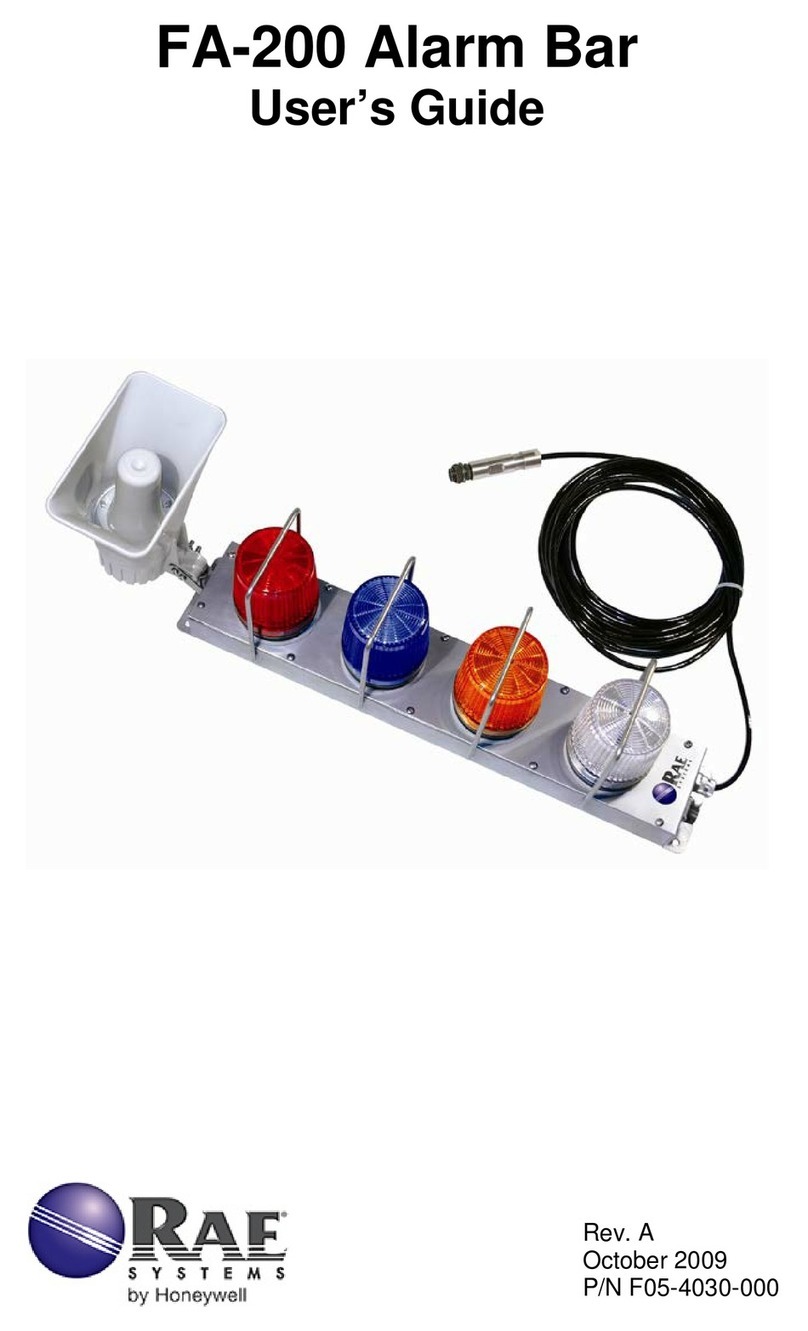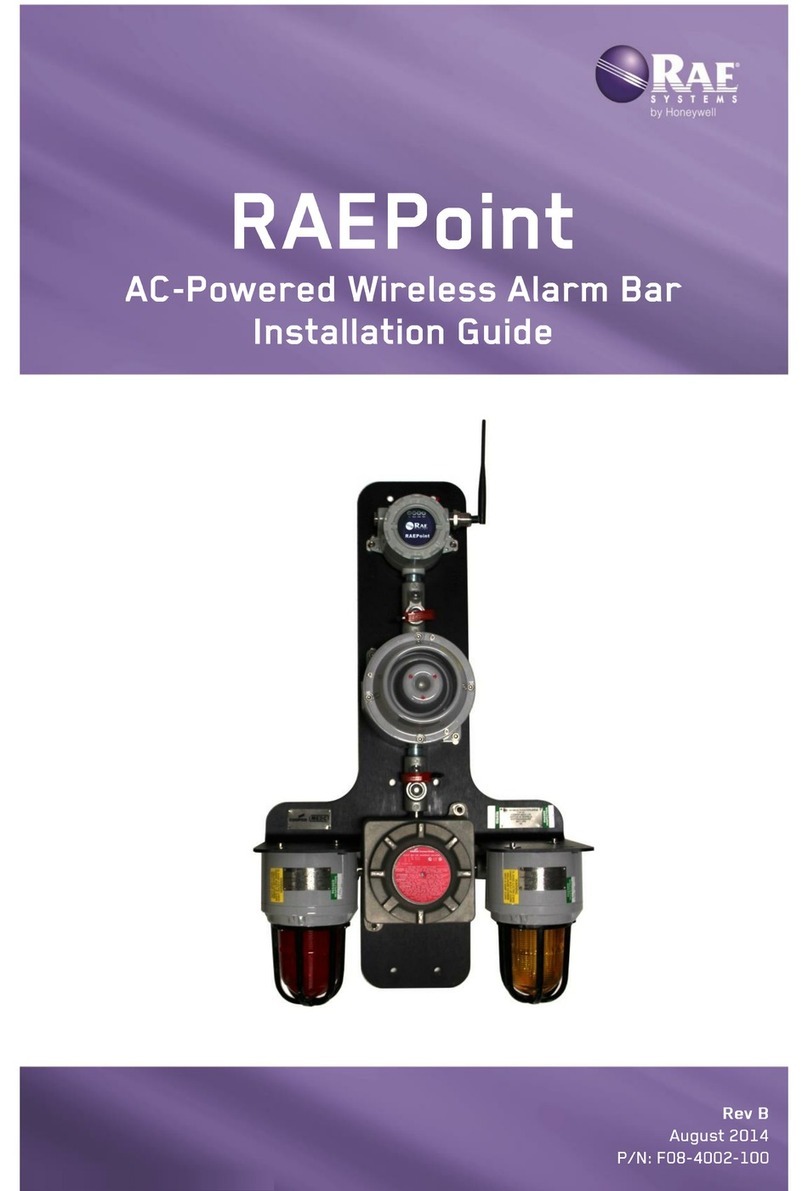1 GeneralInformation
As part of a wireless mesh network, the RAEPoint
DC-PoweredWireless AlarmBar communicates
with wireless detectors andcontrollers and can
direct any of its five internal relays to trigger
audible and visible alarms. Remote alarm
notifications are critical for many applications
where local device alarms are simply not visible
enough or loud enough to alert a wide area.
RAEPoint relay settings canbe fully configured
wirelessly via the system controller. RAEPoint
canalso be configured as a wireless host, and
communicate directly with detectors,providing a
localized alarm notification solution that does not
require a controller. The RAEPoint DC-Powered
Wireless Alarm Bar is suitable for use in ATEX
Zone 1 hazardous area locations.
Key Features
Mounted and pre-wiredwith two 5J xenon lights and a
110dB horn.
Five internal SPDT relays
Wireless transmission distance of 1000 ft (300m), line of
sight. Range canbe extended by using wireless routers.
Suitable for use in ATEX Zone 1 hazardous locations
Explosion-proof enclosure for hazardous environment
applications
LEDs indicate status
Applications
Oil and gas exploration
Refineries and petrochemical plants
Fenceline monitoring





























